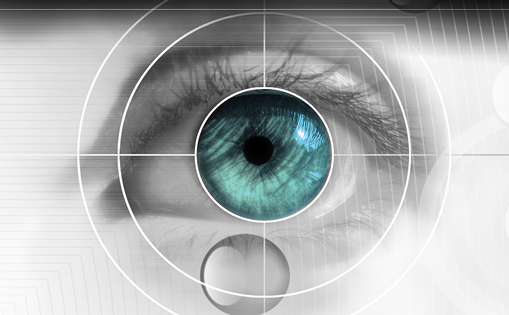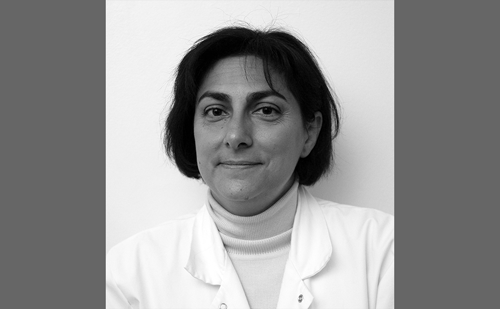The femtosecond laser (FL) is a surgical tool used to prepare accurate, uniform and predictable incisions in the cornea.1 It separates the stromal lamellae using ultra-short-wavelength energy, which creates contiguous small bubbles that expand to form a resection plane. The laser has a very short pulse duration that takes place in the femtosecond range (10–5 seconds). FL uses an infrared neodymium (Nd):glass laser beam that induces an optical breakdown.2 This unique capability enables it to photodisrupt the tissue with minimal thermal and shockwave collateral damage. The firing pattern of the laser is controlled by a computer-based system that allows precise placement of pulses at the desired depths and positions in the cornea.
The most common applications of FL in cornea and refractive surgery include laser in situ keratomileusis (LASIK) flap creation, donor and recipient tissue preparation for penetrating keratoplasty (PK), lamellar dissections in anterior lamellar keratoplasty (ALK), donor tissue preparation for endothelial keratoplasty (EK), astigmatic keratectomy (AK) and creation of corneal pockets for Intacs. Other recently introduced applications of FL include corneal biopsies, corneal tattooing, femtosecond lenticule extraction (FLEx), small-incision lenticule extraction (SMILE), riboflavin FL-created pocket for collagen cross-linking and intrastromal correction for presbyopia (INTRACOR procedure).3–11 In this article we will discuss the most recent advances and new clinical applications of FL.
Laser In Situ Keratomileusis Flap Creation
FL allows preparation of corneal flaps of any desired shape, depth, diameter and length, and enhances reproducibility.1 Its reported advantages over the mechanical microkeratomes include reduced incidence of flap complications, greater predictability of flap thickness and ability to cut thinner flaps.12 FL offers increased variability of flap parameters, so the surgeon can decide the arc and meridian of the hinge and can prepare a more perpendicular side cut, thus allowing far more precise positioning of the flap. These features minimise the risk of post-operative flap complications such as free caps and flap dislocations that are more commonly seen with mechanical microkeratomes.13 In addition, FL flaps have a uniform thickness with a planar shape that is different from meniscus-shaped mechanical microkeratome flaps. Although some studies demonstrate fewer spherical aberrations in FL-operated eyes, longterm visual and refractive results of FL and the mechanical microkeratomes are reported to be similar.14
The new generation of FL platforms offers higher pulse frequencies and lower energy levels, which allows faster flap creation. Similar to mechanical microkeratomes, these FL platforms are able to create LASIK flaps in less than 20 seconds. Additionally, these systems reduce the rate of flap complications that was previously reported with FL-assisted LASIK flap preparation.15 Those complications are rare and include opaque bubble layers (OBL), incomplete flaps and transient light-sensitivity syndrome. Recent advances in optical coherence tomography (OCT) also aid in the management of these complications. In our clinical practice we perform ultra-high-resolution optical coherence tomography (UHR-OCT) in cases with dense OBL to visualise the structural characteristics of the OBL (see Figure 1).16 The documentation of bubbles anterior to the flap interface suggests incomplete flap dissection; in these cases we do not perform a flap lift, and preferentially perform a second pass with the FL.
Laser In Situ Keratomileusis Enhancement
Flap lifting for LASIK enhancement can be performed up to six years after primary LASIK. However, these procedures are associated with an increased rate of epithelial ingrowth.17 FL provides the surgeon with various alternatives in LASIK enhancement surgery. First, FL can be used to re-cut a new flap, which can be programmed to be either thinner or thicker than the previous cut. Laboratory models suggested a separation of more than 30μ between dissection planes to prevent gas bubble spreading.18 In our clinical practice we prefer to cut a thinner flap in enhancement cases. This approach reduces gas bubble leak into the previous flap interface. We set the flap parameters according to the anterior segment OCT (AS-OCT) findings.
FL can also be used to perform a lamellar side cut (see Figure 2) that is deeper and smaller than the previous flap. This lamellar side cut will intersect with the previous lamellar bed, allowing the surgeon to lift the flap with ease. This technique can be used in previous mechanical as well as femtosecond flaps and minimises the risk of developing epithelial ingrowth. The depth and the diameter of the side cut must be selected according to the parameters of the previous flap, which can be demonstrated with the AS-OCT. The centralisation and the position of the new side cut is a challenging part of the surgery. Marking the edges of the flap or dilating the pupils can help to better visualise the old flap.
Lamellar and Penetrating Keratoplasty
FL can be used in selective transplantation of the anterior part of the cornea. This technique allows the preservation of Descemet’s membrane and endothelium. As a result, the integrity of the globe is preserved, the risk of graft rejection is reduced and the potential for devastating intraocular complications is avoided. FL-assisted anterior lamellar keratoplasty (FALK) is a recently suggested application for anterior stromal opacities.3 FALK offers sutureless lamellar keratoplasty and allows replacement of the pathological tissue with a perfectly matched identical corneal lenticule (see Figure 3). FL parameters in FALK are selected according to the AS-OCT measurements. Avoiding sutures prevents suture-related complications such as suture-induced astigmatism and allows for faster visual rehabilitation.3
Nevertheless, FL-assisted deep stromal lamellar keratoplasty still needs further improvements. Available FL platforms cut in reference to the applanator surface of the machine. In cases with significant anterior or posterior surface irregularities, a planar stromal cut cannot be prepared. Future advances that allow the FL cut to be guided using 3D corneal imaging are still required to address this issue.
FLs can be used to cut posterior stromal grafts for endothelial keratoplasty. However, the cut quality of the FL is affected by cut depth and the energy levels.19 For deeper cuts, FL does not provide significant improvements to the quality of the interface or to visual results compared with mechanical microkeratome-assisted endothelial keratoplasty.20 FL can also be used to create multilevelled, stepped corneal trephinations in penetrating keratoplasty. This approach offers improved tectonic wound stability and thus reduces the need for high suture tension by creating highly reproducible, full-thickness interlocking trephinations.9,21 Mushroom, top-hat and zig-zag wound patterns can be used according to the reason for transplantation. The donor cornea is prepared while mounted on an artificial chamber or from a whole globe. The interlocking wound on the recipient eye should not be complete in order to prevent premature opening of the incision. The visual results of FL-assisted PK are reported to be superior to those of classic PK.22 However, the high cost and the need to transfer the patient from the laser suite to the operating room to complete the surgery limit the widespread use of FL in PK.9 Despite the increase in tectonic wound stability, this technique does not solve the most important problem in PK: it is still necessary to suture the graft. Further studies with tissue adhesives and corneal welding techniques may improve the visual results of FL-assisted PK.23
Arcuate Keratectomy in Astigmatism Post-penetrating Keratoplasty
Arcuate corneal incisions have been used for a long time in the treatment of corneal astigmatism. Incisions perpendicular to the steep meridian of the astigmatism produce a flattening effect along that axis. Simultaneous steepening occurs at 90º from the incision, creating what is known as the coupling effect, which avoids significant change in the spherical equivalent refraction. FL is an effective way to perform AK, and has been reported to be more accurate, more predictable and safer than manual AK.24,25 The biggest challenge in PK is the post-operatively induced high astigmatism. Even in the most experienced hands, 40% of patients develop astigmatism >4D.26 Owing to this, PK is accepted as a two-step procedure: in the first step, corneal grafting is completed, while in the second step, corneal astigmatism is treated. FL can be used as an adjunctive method in the surgical treatment of post-keratoplasty astigmatism. In our practice, we programme our FL-assisted AK cut depth to 80% of the thinnest corneal point as measured by the AS-OCT. The accuracy of the corneal cuts with FL decreases the risk of corneal perforations. Paired incisions are made in the graft and centred on the steep axis, as determined by the corneal topography. FL can also be used in irregular astigmatism.7 Corneal wedge resection is another FL-assisted method used in the correction of astigmatism post-PK. This method is suggested for the treatment of patients with very high astigmatism.27 In this technique two intersecting arcuate cuts are performed and a crescent-shaped tissue is resected. Further studies with larger sample sizes are required to create nomograms and address the low predictability reported for these techniques.
Treatment of Presbyopia – INTRACOR
The treatment of presbyopia is a challenge for refractive surgeons. The most common method used for the treatment of presbyopia is still monovision. The other surgical techniques available are presby-LASIK, intracorneal pin-hole INLAYs, conductive keratoplasty and multifocal/accommodative intraocular lens implantation. Recently, Luis Antonio Ruiz suggested INTRACOR as a potential alternative treatment for presbyopia in mild hyperopic and emmetropic patients.28 In this technique, Technolas FL (Technolas Perfect Vision GmbH, Munich, Germany) is used to deliver five consecutive circular intrastromal laser pulses around the visual axis. The stromal pulses re-organise the biomechanical forces of the cornea, creating a multifocal shape. The technique is minimally invasive and does not disturb the anterior and posterior surfaces of the cornea. The alteration in the corneal topography and corneal refractive error is minimal, but still requires further investigation. Although the initial results with IntraCOR are promising, long-term stability is still unknown.
Treatment of Refractive Errors – Femtosecond Lenticule Extraction
The use of FL for the correction of refractive errors without using an excimer laser system has recently been reported in the literature. This technique is performed with a VisuMax FL (Carl Zeiss Meditec; Jena, Germany), with extraction of a stromal lenticule from the cornea. The initial reports showed that 98% of patients achieve refraction within 1D of the refractive target.11 Although these results are not superior to the results achieved with an excimer laser, they are encouraging.
Femtosecond Lasers in Cataract Surgery
One of the most promising advances in ophthalmic surgery is utilising FLs for cataract extraction.10 FL technology has the ability to reduce complication rates and introduce excellent reproducibility and predictability to modern cataract surgery. The Femtosecond laser platform analyses the anterior segment of the eye with an integrated OCT or Scheimpflug system. FL use these data to focus the laser in a 3D fashion to perform capsulorhexis, corneal tunnel incisions, limbalrelaxing incisions, nucleus softening and lens fragmentation.
FL can prepare precise continuous curvilinear capsulorhexis with any desired shape, size and positioning. Employing such a technology to premium intraocular lens cataract surgery can significantly improve visual results and could eliminate decentration-related problems. Lens fragmentation and softening with FL could reduce the energy levels used for phacoemulsification and thus reduce the resultant damage that ultrasound can empose on the endothelium. Furthermore, FL can be used to pre-chop the nucleus, which further shortens the active phaco time. However, there are still limited data on the safety and long-term results of these systems.29
Conclusions
The high accuracy and reproducibility of FL corneal cuts provide superior efficacy, predictability and safety. A newer generation of FL platforms has recently been introduced to the market. These platforms are able to perform significantly faster surgery and provide superior surgical outcomes. Moreover, some of the complications and limitations of the previous generation of FLs are avoided today thanks to the new technical advances. In addition to refractive surgery, FL technology has recently been introduced to cataract surgery and will be available in the ophthalmic market in the near future. Recent advances show that FS laser technology will expand its applications even further.







